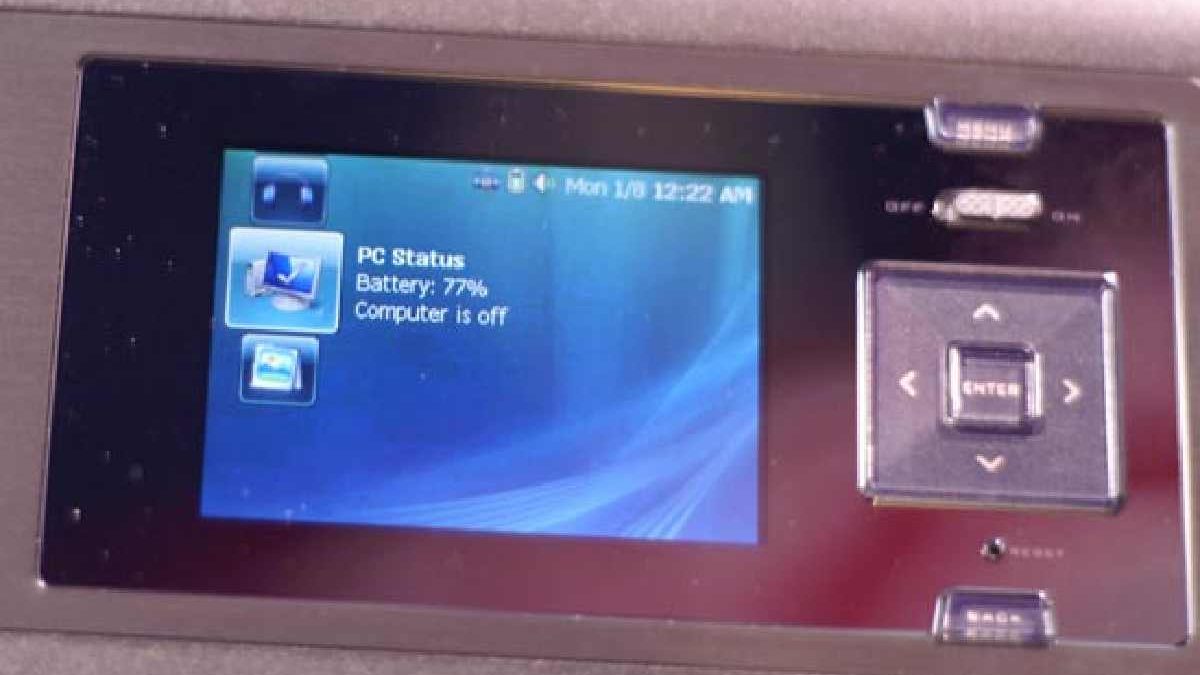Side Show Announced with fanfare with the rest of the new possibilities of Windows Vista, it is clear that for now, the “Side Show” functionality does not unleash the crowds. For those who do not yet know this technology, it allows you to perform various basic operations (email, photo, MP3 playback, etc.) using a small secondary screen.
The originality and the strength of the system reside in the fact that it is capable of operating autonomously, with the PC switched off. Is the Side Show concept doomed to failure or, on the contrary, promoted to a bright future? We’ll try to provide a rough answer by listing current and future prospects for a feature that isn’t as dumb as it looks.
Table of Contents
Sideshow: Difficult Start
At the moment, Side Show peripheral devices only integrate on “high end” devices. This state of affairs considerably reduces the number of equipped machines. Given the lack of enthusiasm for this feature, there is little chance that the trend will reverse in the short term. A brief passage on the official site of the “addons” of Side Show seems to indicate that this lack of general interest has gone so far as to contaminate its parent. Indeed, at the time of writing these lines, no additional module is available on the Microsoft site! To complete this idyllic picture, the current implementation of Side Show generally makes it superfluous (we’ll come back to this aspect of things in the final chapter). This sum of handicaps gives the process an incomplete character,
Gadgets For The Gadget
To better understand the dubious pun of the previous paragraph, know that just like the “sidebar” of Windows Vista, Sideshow is customizable using complementary modules called “gadgets”. On this subject, to understand to what extent this technology is on the way to becoming essential, I invite you to take a short tour of the official site dedicated to Side Show Gadgets by clicking on the following link. No, you’re not dreaming, there is currently no additional Side Show Gadget on Microsoft’s French portal! A shame when you know that Vista is still in stores for 5 months.
Dating Site For Sideshow Gadgets.
Like us, you came back empty-handed from the French portal and are starting to sink into a serious nervous breakdown. Are you bored with the three built-in default gadgets on your Side Show device? Do you want to make new friends?
Development Of Additional Gadgets.
Realize: for the moment, it is impossible to indulge in the joys of minesweeper on Side Show (nor in any other game for that matter). Microsoft has set up this website to help you in this militant approach. If your second foreign language is C++, get start on programming the 17th gadget right away.
Hardware Keys
To answer the question that some people are probably asking: like any self-respecting computer system, Side Show sometimes “crashes” (don’t forget to take your magic paperclip with you on the go). Navigating within the Side Show menus is done using hardware keys located generally on the right of the control screen. We also note the presence of a (discreet) “reset” button that can be operated using a pointed tool.
Navigation In Sideshow
Slowness: After a few minutes of navigating through the menus of our test PC, two remarks come to mind. First of all Our Side Show device seems to suffer from a certain lack of power, unless it is a problem of software optimizations. When trying to navigate quickly in the general menu, the latter annoys by a relative slowness. Worse. by scanning our emails (too?) quickly, after releasing the “down” button. The system continue to scroll through the emails for 30 seconds to catch up on the accumulated delay.
The illogicality: After a day of practice. We are entitle to have doubts about the proper use of the “Back” button. Indeed, in most gadgets. The return to the previous menu is done using the “left” key of the directional pad. And also If the left key does not work, pressing the “menu” key will bring up the “back” option on the screen. In summary. This button is almost never use. Strange.
Hardware Design Notes
A Side Show device can be USB or Bluetooth. And also It is own flash memory (1 GB in our example) and its own BIOS (flash able under Windows). Under the explorer. The latter is see as if it were a USB key or a mobile device (see photo below). Be careful, you can only copy compatible files (MP3, JPG…). External Side Show devices exist but unfortunately these do not provide. The ability to start the computer remotely to update gadgets.

